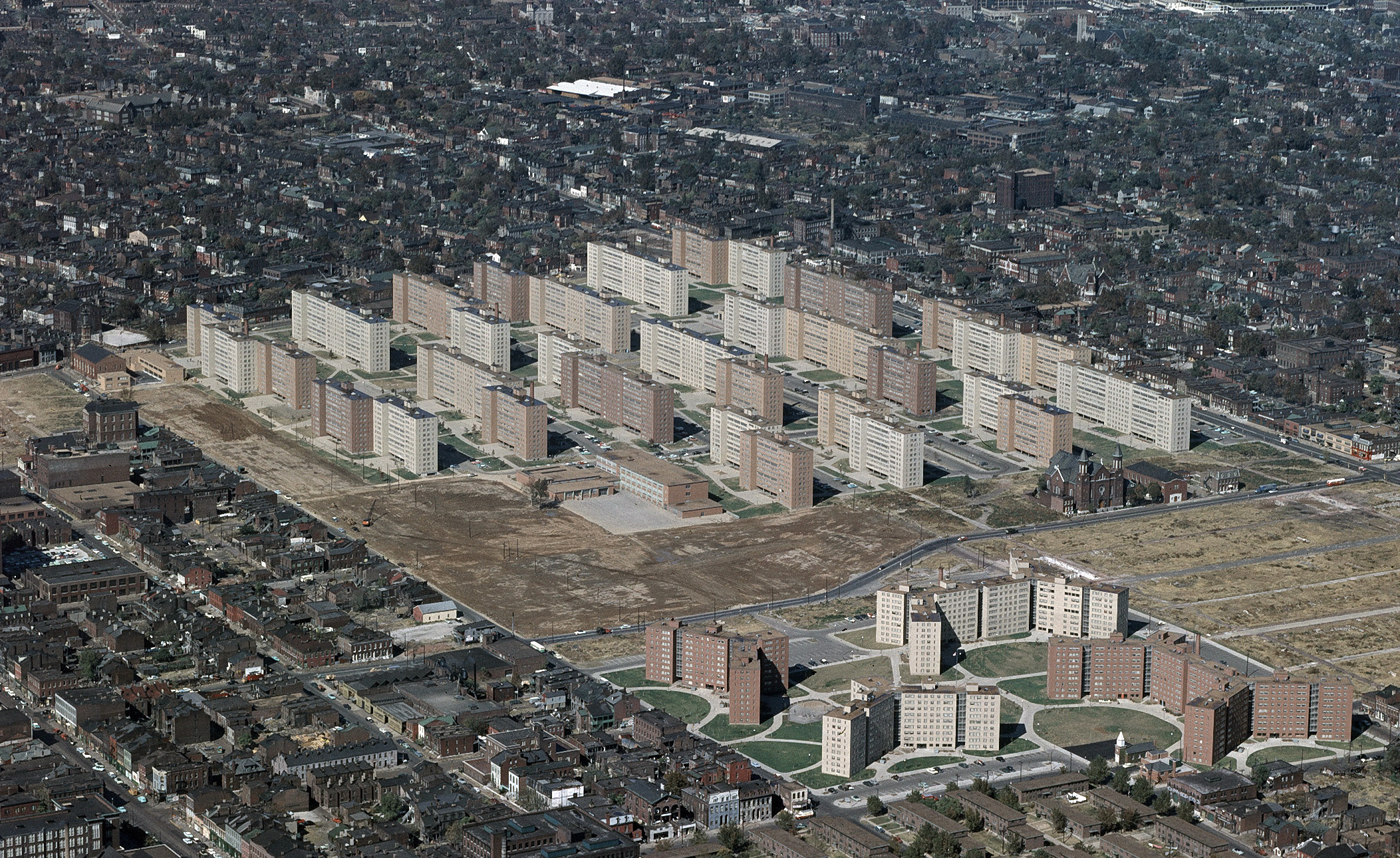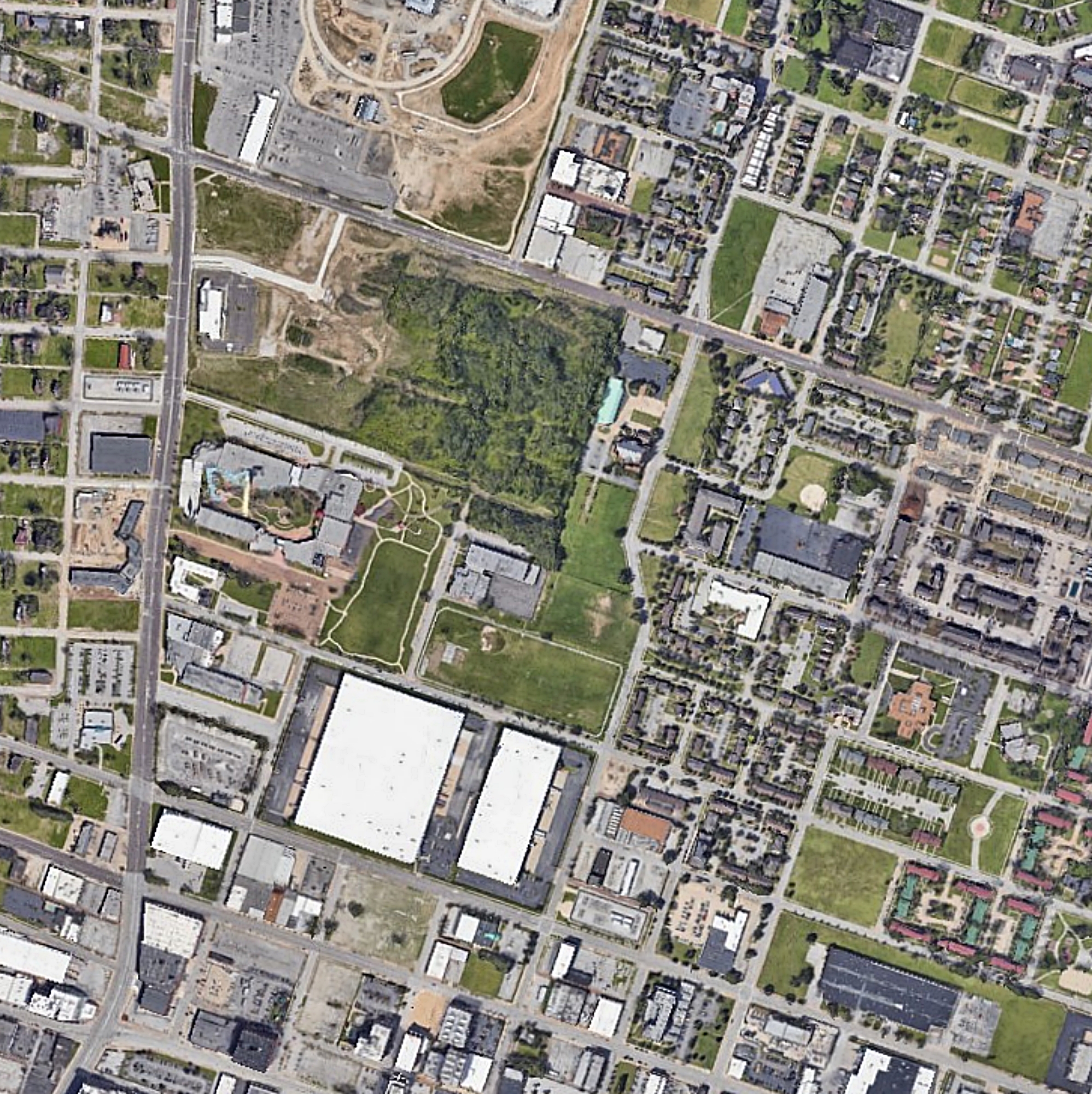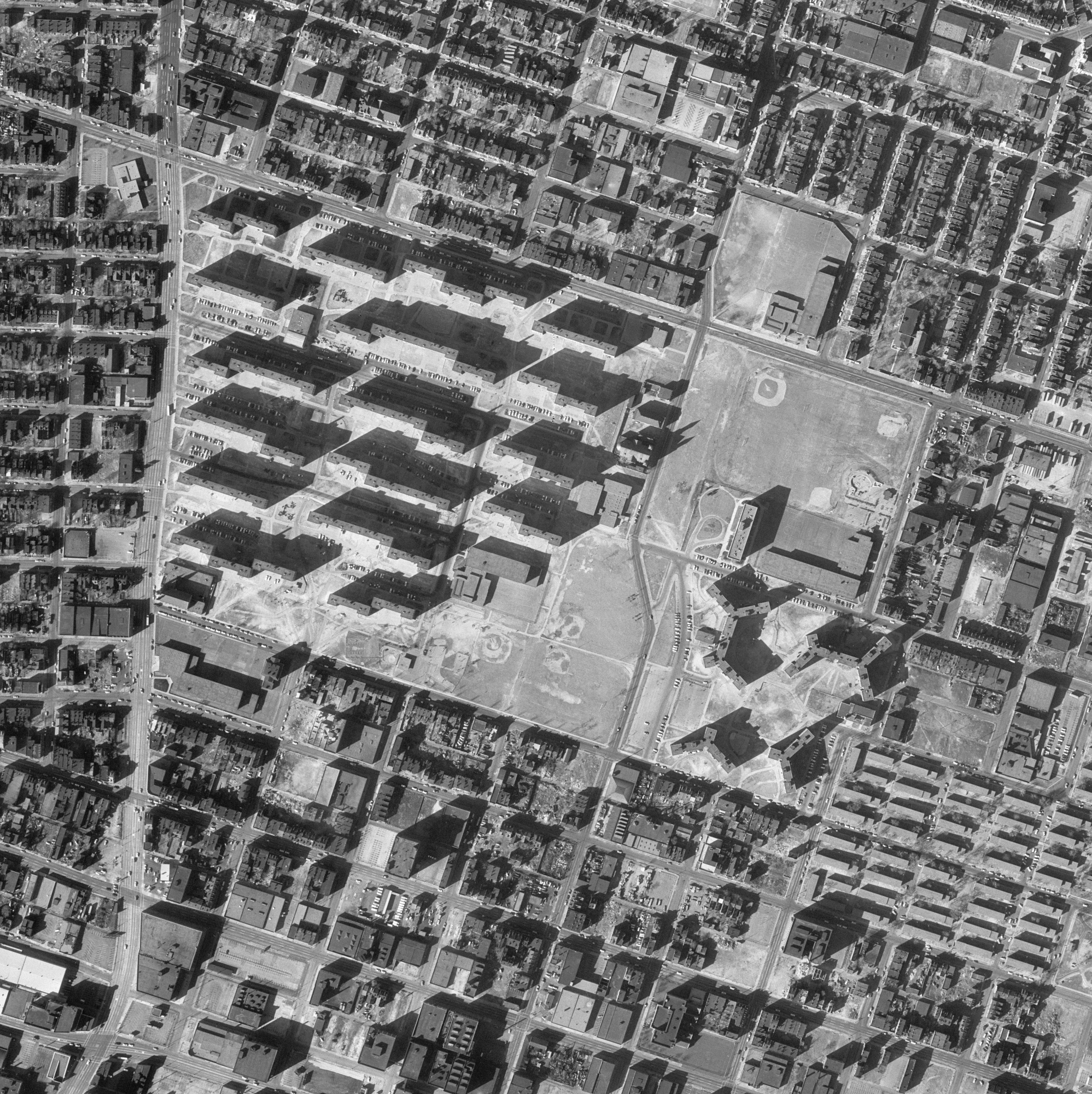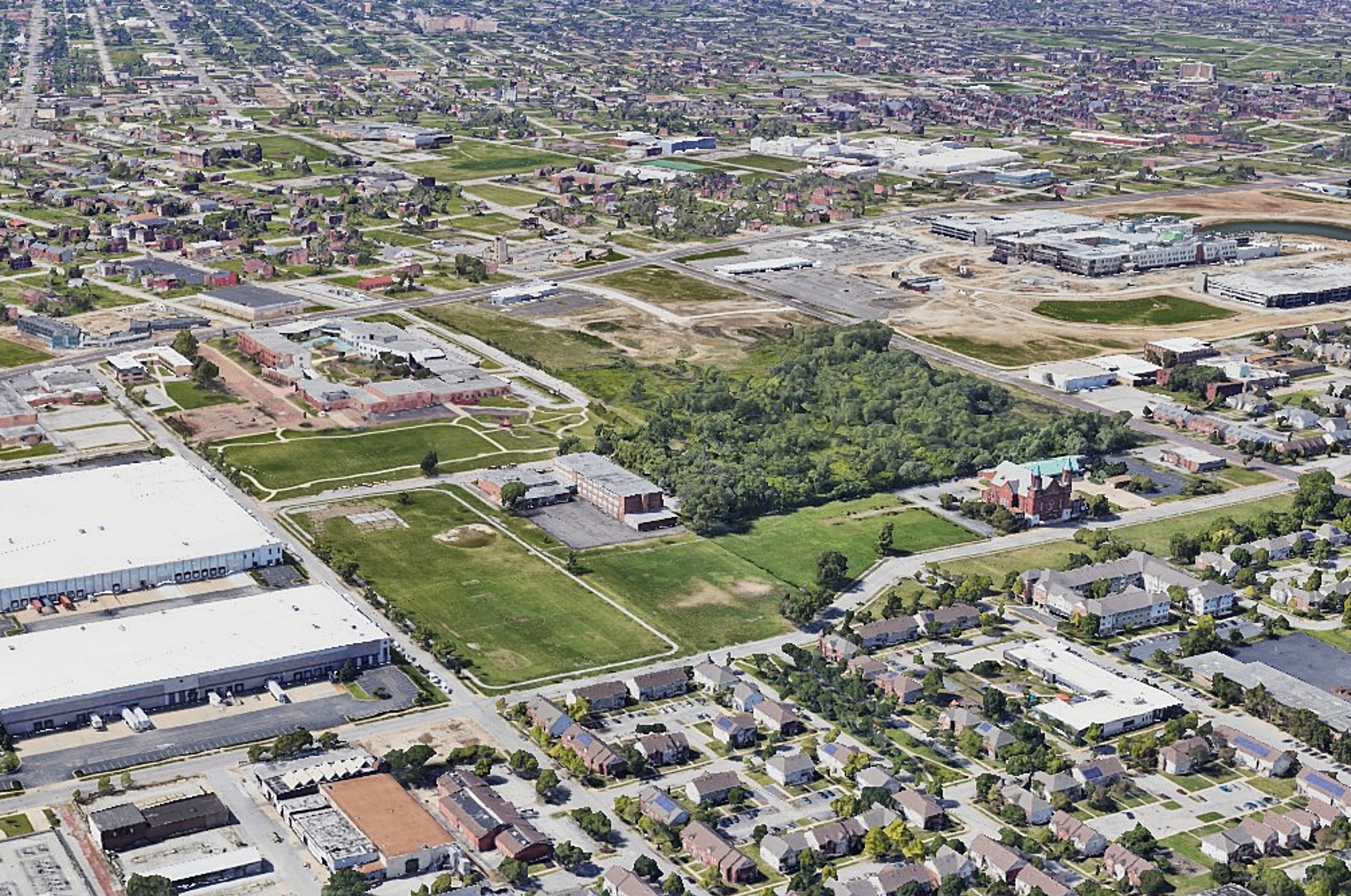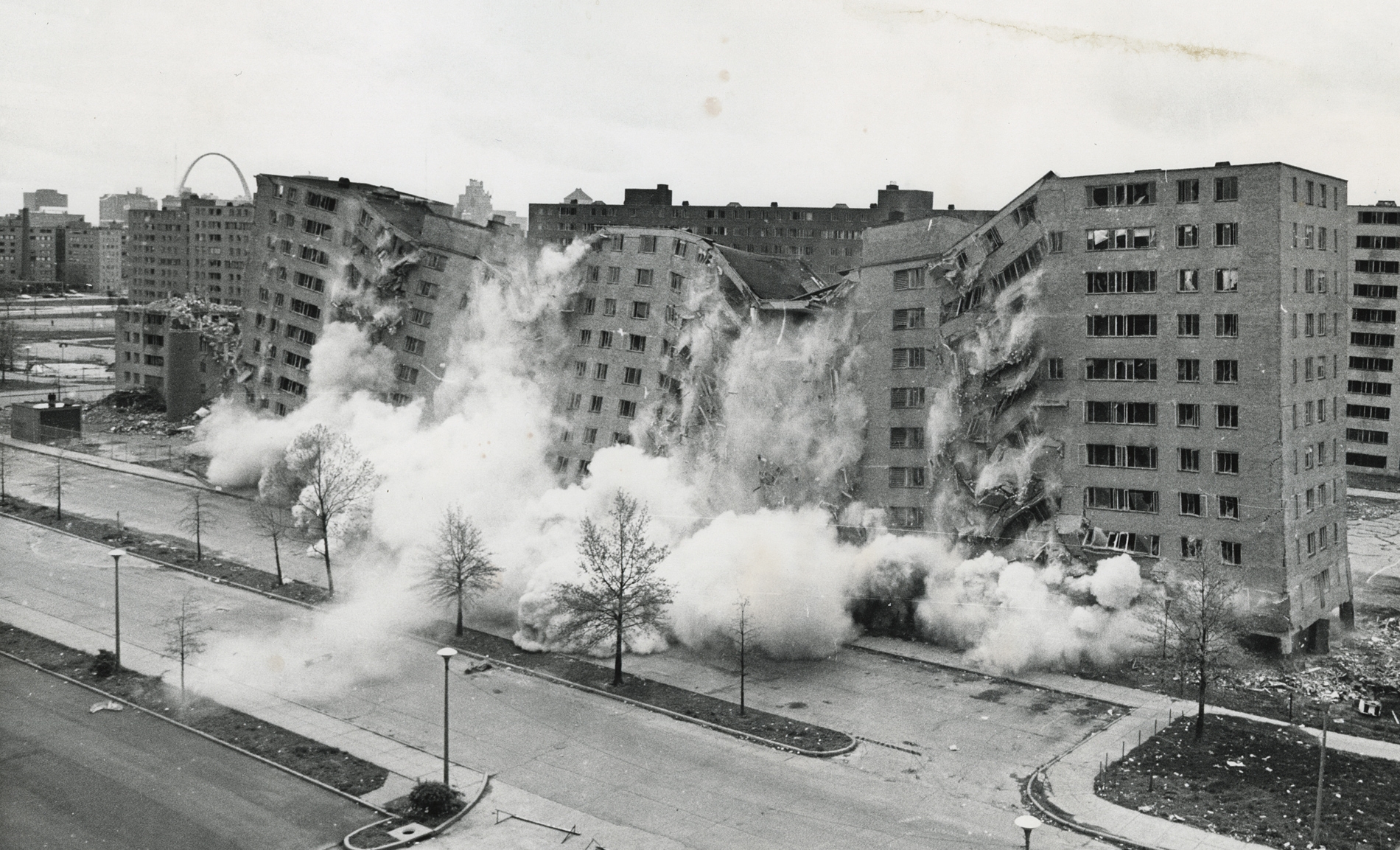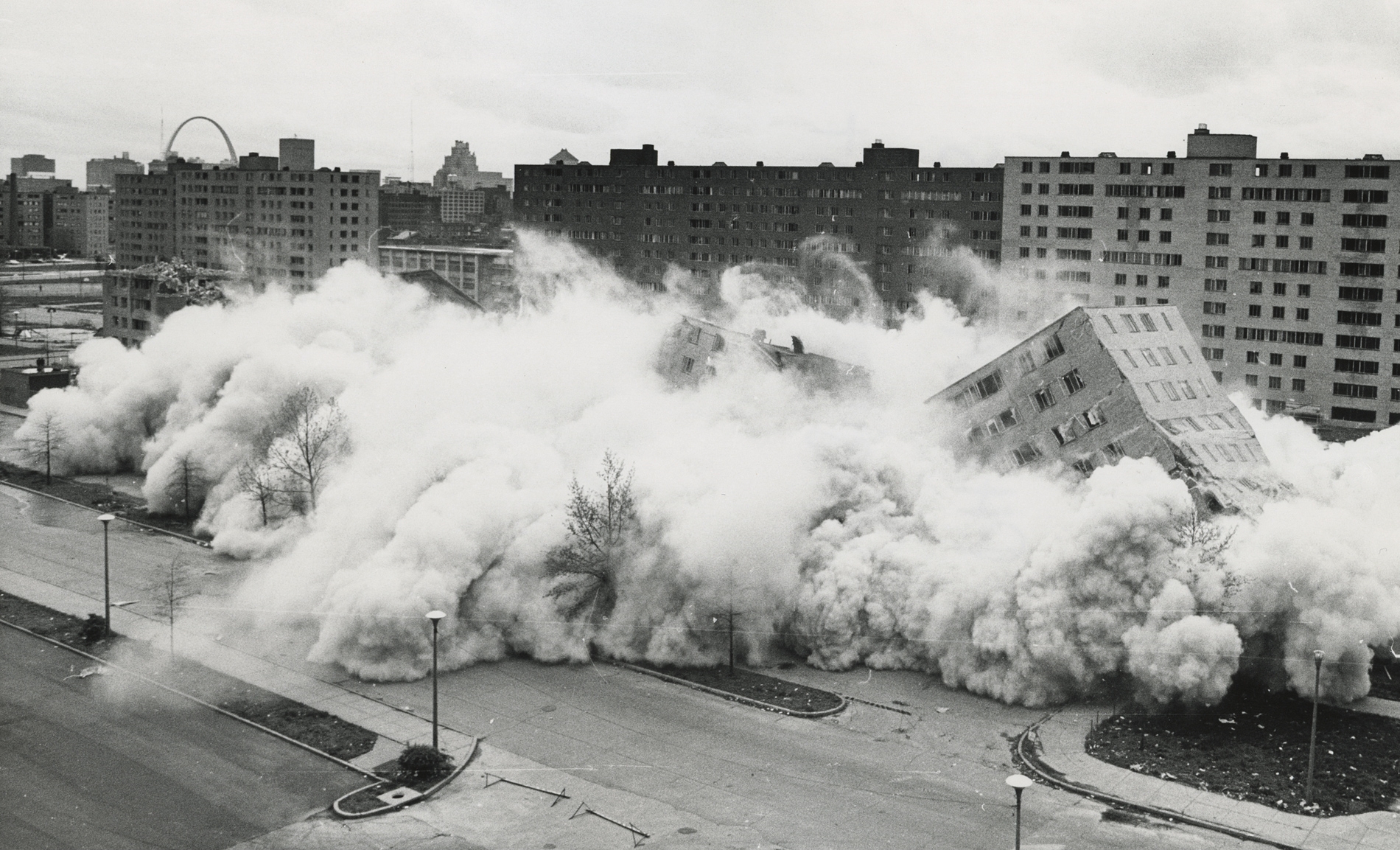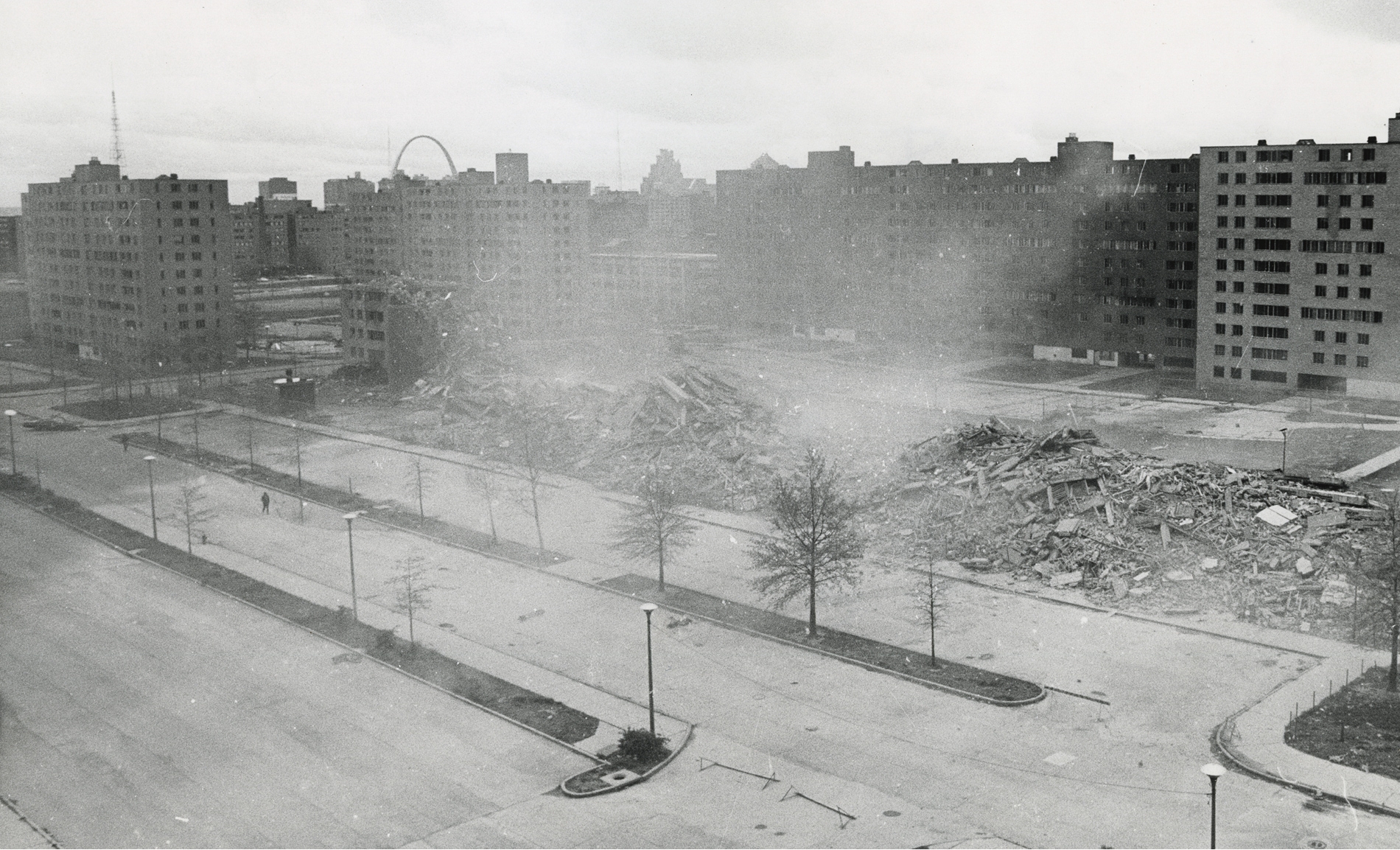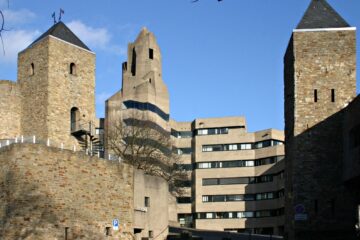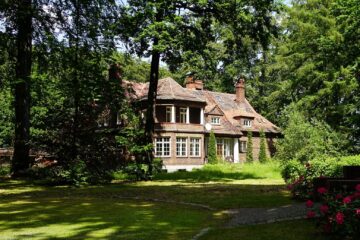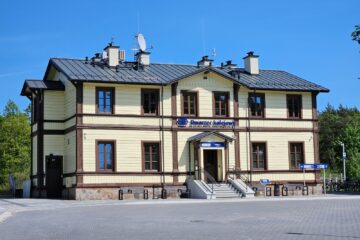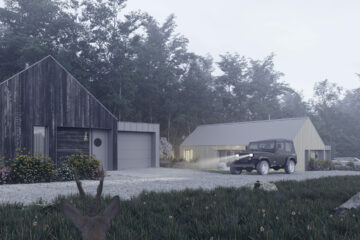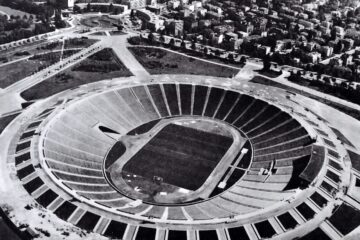Block housing estates can be found in practically every major city in the former Eastern Bloc countries (including Poland). While in Europe they have become a permanent feature of the urban landscape and still serve millions of residents today, in the USA similar housing estates with similar architecture have not fared well and have often been demolished after a short period of time, an excellent example being the Pruitt-Igoe housing estate in St. Louis, a city in the central part of the United States in the state of Missouri
In the 1940s, St. Louis was a growing city with housing problems and overcrowding very quickly. A large proportion of the population lived in poor and often dire conditions. Many buildings were old and in a poor state of repair. Significantly, the problems affected both African-Americans and white residents of the city
Pruitt-Igoe in St Louis. Source: United States Geological Survey, public domain, via Wikimedia Commons

In 1950, a project was put forward to redevelop several neighbourhoods in the city and at least partially solve the problem. The project called for the demolition of many quarters of slums and old tenements and, in their place, the construction of new high-rise residential buildings surrounded by parks, shopping centres, schools and other facilities that would serve the residents. Their design, in line with the ideals of the CIAM International Congress of Modern Architecture, was created by Minoru Yamasaki – the architect later responsible for, among other things, the design of the World Trade Center twin towers in New York, which we wrote about HERE
The estate in 1968 and the same site today. Source: USGS, public domain, via Wikimedia Commons and Google Earth
The modernist Pruitt-Igoe estate was developed between 1952 and 1955 and consisted of 10-storey blocks of large slab buildings. The buildings were characterised by small, dark and cramped flats. Their floor space was slightly larger than that of the surrounding old townhouses, but was still well below the standard of 1950s architecture. The blocks had windowless staircases and non-functional lifts that only stopped at every third floor. The estate was divided into two parts. One, named Pruitt (in honour of Wendell O. Pruitt, a black pilot who fought in World War II) was to be inhabited by African-Americans; the other, patronised by Congressman William L. Igoe, was intended for whites. Shortly thereafter, the division was abolished
The settlement in the late 1960s and early 1970s and the same site today. Source: United States Geological Survey, public domain, via Wikimedia Commons and Google Earth
The Pruitt-Igoe estate’s problems after about a decade of use have become crime, vandalism and a lack of new people willing to live there. Attempts to revitalise it proved unprofitable and failed. In view of this, the decision was taken to liquidate it. on 15 July 1972, the Pruitt-Igoe housing estate, which was less than 20 years old, was blown up, a date which is regarded as the symbolic end of the CIAM era
Source: smartage.co.uk, medium.com
Read also : Architecture | Modernism | Settlement | Urbanism | History | United States

